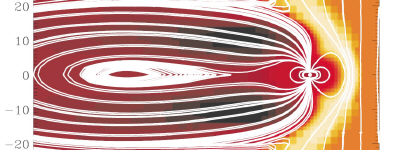|
|
 |
Coverage
Global, longitudinal averaging model with an altitude range from 0 to 100 km Box width:
* vertical ca. 3 km
* horizontal 9.47 degree
Chemistry code
The same code as the SLIMCAT model [1]
40 short-lived species and 17 long-lived species
185 photo-chemical and heterogeneous reactions
Reaction rates from the JPL 2000 recommendation [2]
Partitioning of the HOx, NOx, ClOx, BrOx, and CHOx families is calculated in photochemical equilibrium
Meteorology
Based on J. Kinnersleys THIN AIR [3] model
Calculates pressure, temperature, horizontal and vertical transport from the basic equations.
Ionisation
NOx and HOx production due to ionisation of the atmosphere is treated as described i.e. in Jackmann, 1990 [4];
that means that 1.25 NO molecules and 2 HOx molecules are produced per ion pair.
NOTE
The dynamical code seems to work okay from the stratosphere up to the mesopause; the chemical code, on the other hand, is optimized for the stratosphere. The family approach is not valid in the upper mesosphere, so the chemistry code is valid only up to 70 km altitude. An extension of the chemistry code into the mesosphere is currently in progress.
References
[1] Chipperfield, M., JGR 104, 1781-1805, 1999
[2] Chemical Kinetics and Photochemical Data for Use in Stratospheric Modeling, Evaluation Number 13, JPL Publications 00-3, 2000
[3] Kinnersley, J., Q.J.R. Meteor. Soc., 122, 1996
[4] Jackmann et al, JGR 95, 7417-7428, 1990
|
 |

